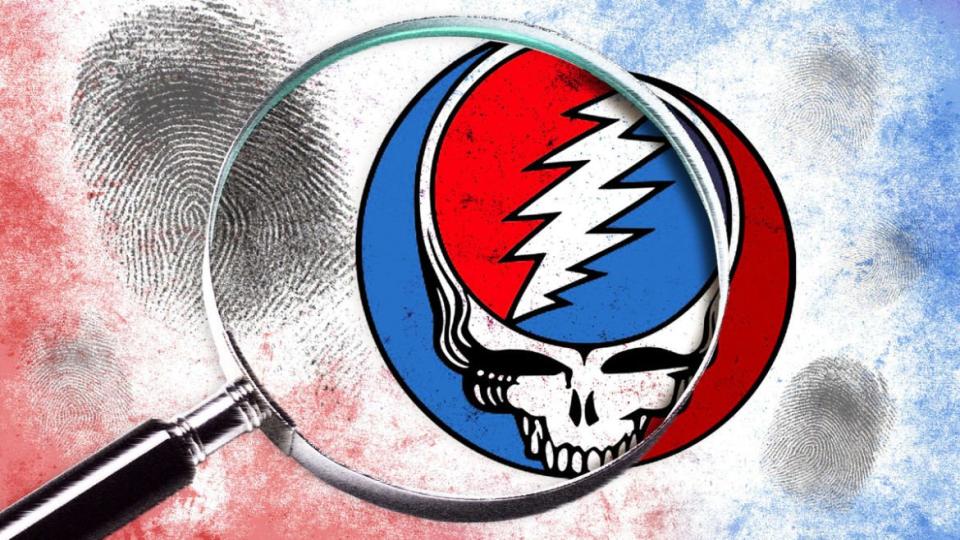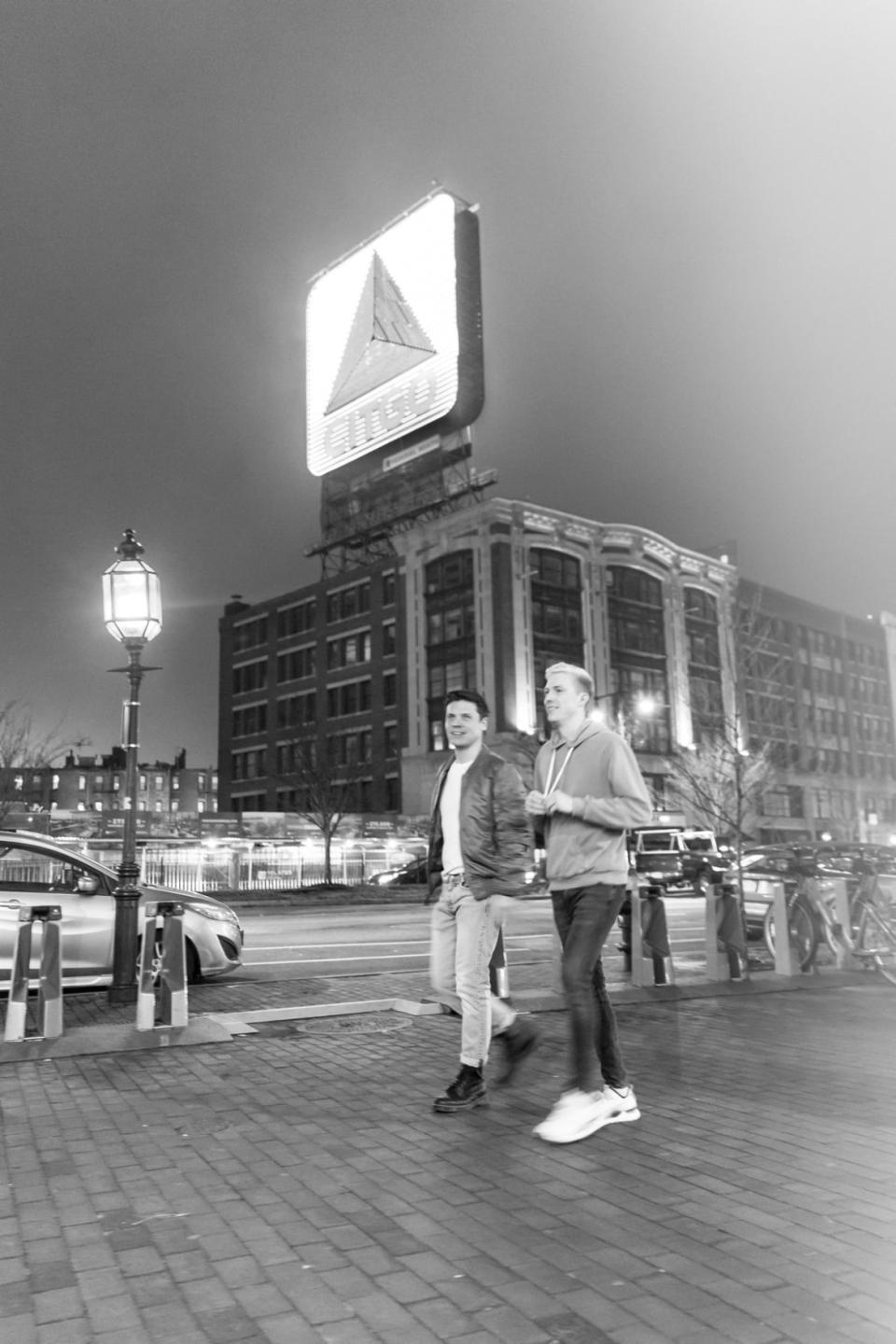Why Are So Many Grateful Dead Fans Being Murdered?

Bridget Lee Pendell-Williamson was 23 years old when she vanished while following the Grateful Dead in 1996.
Douglas Simmons was last seen at a Grateful Dead concert in 1990.
Mitchel Fred Weiser and his girlfriend, Bonita Bickwit, went missing while hitchhiking to a Grateful Dead concert in 1993.
In 1995, a man’s body was found on the side of a highway by a Grateful Dead concert in Atlanta. His identity is still unknown.
In 2008, a woman’s body was discovered by a fisherman underneath a boxspring in Sacramento. Her cause of death and identity is still unknown. The one marker: she was wearing a Grateful Dead jacket.
A murdered woman was found in the woods of Warren County, New Jersey, in 1991. The only identifying feature on her mutilated body was a tiger tattoo on her left leg—the same tiger design on Jerry Garcia’s guitar.
Two men were found dead in a ghastly Volkswagen van crash in 1995, but only one of the men could be identified. The only clues to who the second person was: two Grateful Dead tickets in his pocket.
“When you think of the Grateful Dead, you think of peace and love and music and community,” podcaster Jake Brennan tells The Daily Beast. “You don’t think of murder and true crime.”
Brennan and co-host Payne Lindsey are behind the podcast Dead and Gone, which has been grabbing attention since its release earlier this month for its investigations into the unusual spate of missing and murdered fans of the Grateful Dead, better known as Deadheads. (The aforementioned cases are just a handful of the examples.)
There’s a record-scratch intrigue in the seeming dissonance between the vibe associated with the psychedelics-devouring, hippie-skewing, tie-dye-wearing anti-establishment fan community and the darkness underscoring the violent crimes and mysteries outlined in Dead and Gone.
The podcast explores the surprising darkness at the core of the Dead’s music and the culture surrounding them, and the phenomenon of how susceptible Deadheads, in their free-wheeling nature, have been to predation. (After founding member Jerry Garcia's death in 1995, surviving band members continued to tour.)

‘Dead and Gone’ podcast hosts Jake Brennan and Payne Lindsey.
While surveying the spate of cases that all share a Deadhead connection, Dead and Gone zeroes in most specifically on the double homicide of Mary Gioia and Greg Kniffin, who were 22 and 18, respectively, when they were murdered at the free Rainbow Village fan encampment in San Francisco in 1985. The couple was planning to crash in the Deadhead commune for a few nights. They were found beaten and fatally shot.
A 31-year-old Black man named Ralph International Thomas was sentenced to death for the killings, only for it to be revealed years later that he was wrongly convicted and the real culprit could still be on the loose. (America’s systemic racism exists even inside Rainbow Village.) The podcast then takes on an investigation: Who killed Mary and Greg?
“The Grateful Dead fan base is just so huge, fans across several generations and all across the world,” says Lindsey. ”Anytime anything Grateful Dead-related comes out, it's got the interest of millions of people from all walks of life. There's this very strong network of people who communicate very well amongst each other, who want to see justice.”
The point is made early on that there is not a serial killer who has been hunting down Deadheads for decades. As prolific cybersleuth Todd Matthews explains in an interview, what he established by linking these cases to the victims’ Grateful Dead fandom is a commonality that garners attention—murder and the Grateful Dead is pretty tantalizing as far as headlines go—and hopefully helps solve cold cases.
“The real commonality is this sort of vulnerability that exists in a lot of different subsets of people,” Lindsey says. “The importance of this whole thing is that, by bundling them all together like that and giving them a moniker, it creates this commonality that is noticed. And so people who are part of the Grateful Dead world will see this, and they're likely the people who could help solve it.”
It’s tempting to generalize about Deadheads in order to get to the heart of that vulnerability, but it’s also valuable in understanding why there is a link between these cases.
Dead and Gone features interviews with Deadheads recalling the vibe at concerts and in the encampments, where inebriation and the euphorically familial community mixes for a high of undeterred, disoriented trust. An attitude of carefree acceptance can make all that tie-dye warp into a target.
“There are plenty of opportunities for a wolf in sheep's clothing to take advantage of the vulnerability,” Lindsey says.
One fan describes scalping tickets in the parking lot and, in all the ecstasy of excitement, not realizing until well into post-concert celebrations that he had no memory of where he parked his car. Others recount willfully hopping from van to van and tent to tent to parties and the common practice of hitchhiking, all while stoned and out of sorts.
“Not to sound like an authoritarian square…” Brennan starts. “And the Grateful Dead, obviously, they didn't have anything to do with this and we're not casting blame on them. But they live and they preach this super anti-authority lifestyle, even after they became an institution themselves. Being a Deadhead and traveling on the road following the band was all about living outside of the bounds of society, and there's a lawlessness that goes along with that. It's ultimately part of what contributed to this environment of vulnerability where people went missing and lost their lives.”
Riding a wave of pop culture’s true-crime obsession, the Dead and Gone hosts credit a “chocolate and peanut butter” appeal to the mixing of Grateful Dead lore with true crime, two things that don't appear to go together but end up being a compelling combination.
Lindsey’s background is in true-crime investigation, having created the podcasts Up and Vanished, about the cold-case disappearance of a former beauty queen in Georgia, and Atlanta Monster, about the infamous murders of 25 children in the city from 1979-81. And while Brennan’s podcast Disgraceland was about musicians getting away with murder, he was largely unfamiliar with the Dead and their fanbase before working on Dead and Gone.
One thing they’ve both been struck by after interviewing Deadheads from all over the country is how many of them are not surprised to learn about these murders, an acknowledgment of the darkness that seemed to be always lurking in those sketchy parking lots and risky invitations by strangers.
“That darkness is not only prevalent in the history of the culture of the Grateful Dead, the people who went to see the show, and the things that happened to them that we're exploring through the murders here, but the other piece of it is—and this goes a bit unsaid at the surface level of the Dead narrative—that darkness is pretty well represented in song as well,” Brennan says, citing “Dire Wolf” and “Death Don’t Have Mercy” as examples.
“It's just ironic that some of those tales of murder and violence came to fruition in some ways at Dead concerts and in the Deadhead community.”
Get our top stories in your inbox every day. Sign up now!
Daily Beast Membership: Beast Inside goes deeper on the stories that matter to you. Learn more.

 Yahoo Finance
Yahoo Finance 